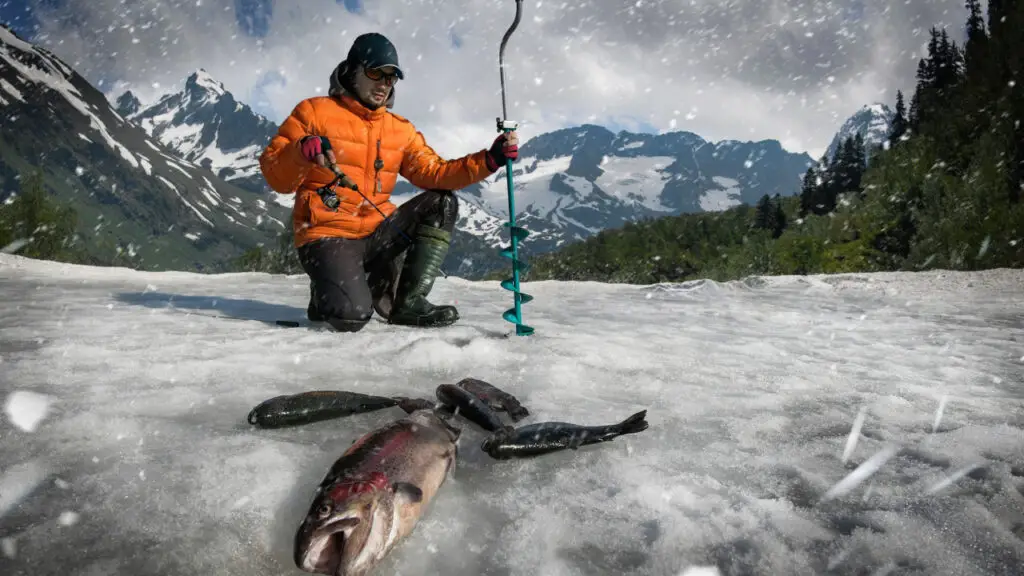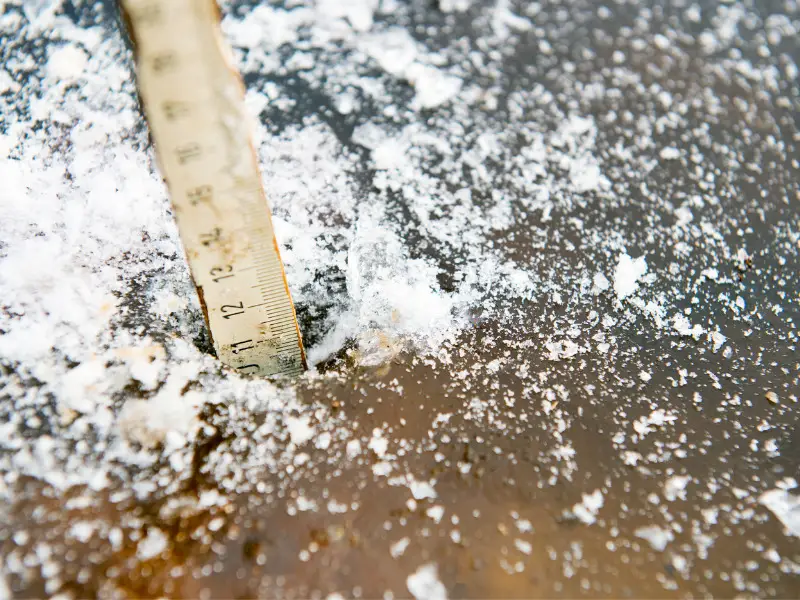
Just like any other season, ice fishing season has a start point and an endpoint. However, its end is based on the region and that year’s weather. Lakes in some states have their safe ice earlier than others.
In general, ice fishing season ends by mid to late March, but some states extend till April. However, the exact date on when it ends varies between states.
Table of Contents
When Does Ice Fishing Start?
The start date is defined by weather, and, thus, it differs between states and year. However, ice fishing in most states such as New Hampshire, Ohio, Pennsylvania, South Dakota, Washington, and Wyoming starts in December.
But for some, it can begin as early as November.
What Defines The Start Of Ice Fishing Seasons?
The weather mainly determines the start of ice fishing season. There are years when ice forms early, and other years it forms late.
In areas near the Arctic Circle, the ice fishing season begins early compared to those located far from the Arctic Circle.
This means that, in states like Alaska, it is expected that ice fishing season starts as early as October. However, the weather of that year plays a significant role in the start date.
In states located further from the Arctic Circle, the season is expected to start from late December, and some start early January.
What Is The Duration Of The Ice Fishing Season?
The duration of the ice fishing season varies drastically from one region to another. In the past, seasons extended for a long time.
However, in the recent past, there has been a sudden shift in the weather pattern. The sudden change in weather patterns has affected the start and end of the ice fishing season.
According to data on Great Lakes Basin cover, there has been a decline of 71% since 1973. The unpredictability of Ice cover affects the end of the ice fishing season. In recent years, the Great Lakes Basin cover has experienced lows and highs in the amount of Ice cover.
Therefore, the industry is facing extreme weather conditions, which have resulted in seasons of high ice years and low ice years.
Depending on state location, weather pattern during that season, and air temperature, the end of ice fishing season varies.
Some states have lower ice fishing duration extending to only one month, while others have extended seasons of up to five months.
For example, in Alaska, due to its closeness to the Arctic Circle, has the longest safe ice seasons that extends from October to May.
Contrastingly, states such as Texas, Florida, Georgia, Mississippi, South Carolina, Alabama, Tennessee, Louisiana, and Arkansas don’t have winters cold enough for ice fishing.
All these states are in the southeast of the United States.
What Is The Safe Ice Cover For Ice Fishing?

When winter starts, many may think that it is time to start ice fishing.
However, this is not the case. Most ice fishing accidents happen because a lot of people rush to the lakes before the right amount of ice cover has formed.
Before embarking on ice fishing, you need to consider the ice thickness. For safe ice fishing, the ice thickness must be more than 3 inches.
Though, the recommended thickness is 4-5 inches as it can effectively hold an average person’s weight.
For anglers using snow machines and snowmobiles, the ice cover must be more than 6 inches.
In addition, in light carriers, the minimum required ice thickness is 7-12 inches, and for full-sized trucks, it must be more than 14 inches.
Another thing that you should never overlook is how the ice is distributed. In some lakes, the thickness of ice might not be uniformly distributed.
One safe spot of the lake doesn’t mean the whole lake is safe to venture. Ice stability in the lake is often affected by weed growth, springs, and currents.
Therefore, it is crucial to tread skilfully and check the thickness of the ice with the help of a spud bar.
What Determines The End Of The Ice Fishing Season?
The duration of ice fishing season is based on the thickness of ice cover during that season.
A location’s temperature during the winter season is another critical factor. There are times that the season can extend for a shorter or longer period.
Generally, in states close to the Arctic Circle, ice fishing seasons are long compared to other states. In central Alaska, ice fishing season ends mostly in late April and can extend up to May.
In states like Maryland, North Carolina, Oklahoma, Virginia, and Arizona, ice fishing season is not long.
In these states, the season starts in January and ends in February. Overall, weather pattern during a specific year defines whether there will be shorter or longer ice fishing season.
It is important to note that, ice fishing season, based on the current trend in climatic change, there will be no definite date on the start or end of the ice fishing season.
With global warming in the picture, it is clear that there will be seasons of high ice cover and low ice cover. Also, there will be extended or reduced ice fishing duration across board.
Final Words
With the current weather patterns, it will be hard to predict the start or end of ice fishing season. In some years, anglers will experience early starts in ice fishing seasons or late seasons.
While it is easy to predict the end of ice fishing season in states such as Alaska and Minnesota, it is advisable to check and confirm with local fishing agents to understand whether there is enough ice cover.